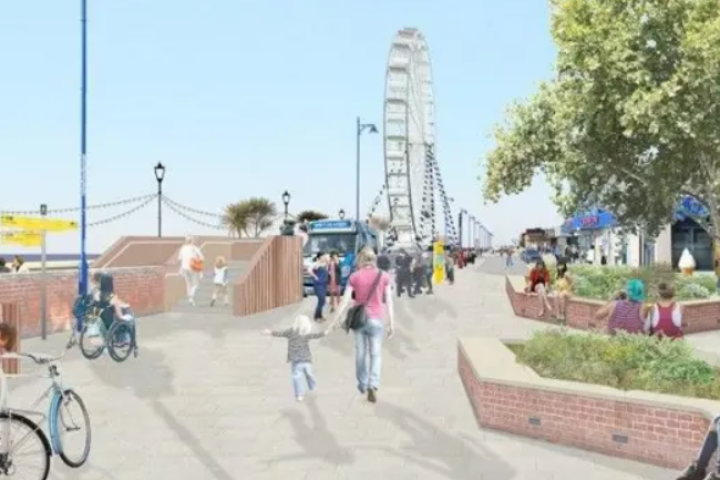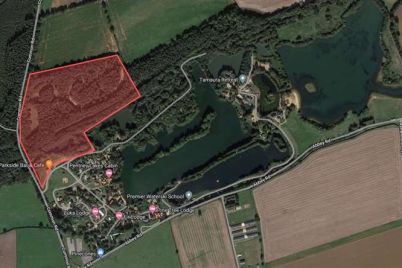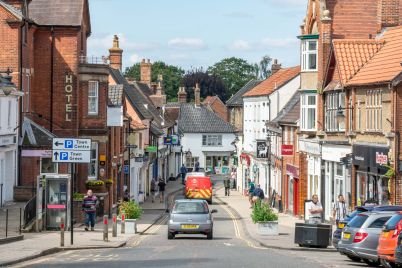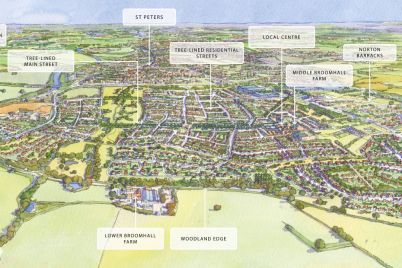Felixstowe’s seafront could soon look very different under proposals to pedestrianise Sea Road.
East Suffolk Council is considering a trial to remove cars from part of the busy stretch, replacing it with a more welcoming space for visitors. The idea is part of a wider strategy to boost tourism and enhance the town’s appeal as a year-round seaside destination.
A report to the council said several short-term projects, including new promenade lighting and upgraded shelters, would “create a beautiful, welcoming environment” along the front. Sea Road, which sits close to Felixstowe Pier, has long been dominated by traffic, with parked and moving vehicles leaving businesses overshadowed.
The proposals argue that a car-free seafront would create more space for pedestrians, make cafes and amusements more accessible, and help businesses thrive. Councillor Tim Wilson, who has responsibility for economic development, said the road’s current layout compromises the vitality of the area.
If approved, the pedestrianisation would begin with a trial before any decision is made on whether to make it permanent. The scheme could be in place by the end of the 2027/28 financial year, although some elements may arrive sooner.
Alongside this, the council is also seeking funding for a new “heritage attraction” at one of Felixstowe’s Martello Towers, coastal defence structures built in the 19th century during the Napoleonic Wars. Enhancements to Martello Park, new signage, and improved links between the promenade and Manor Terrace are also part of the package.
Felixstowe’s seafront has long been central to the town’s identity. The Victorian promenade, Edwardian gardens, and beach huts—believed to be among the first in Britain—made it a fashionable resort in the late 19th and early 20th centuries. Visitors ranged from Edwardian holidaymakers to the German imperial family in 1891, cementing its reputation as a resort of note.
The town’s fortunes have fluctuated, with Felixstowe later becoming synonymous with its docks. Today, the Port of Felixstowe is Britain’s largest container port, handling nearly half of the UK’s container trade. But tourism remains a vital part of the local economy, with attractions including the Spa Pavilion theatre, Felixstowe Museum, Landguard Fort, and the pier, which reopened in 2018 with amusements, food outlets, and a restaurant.
Council leaders believe improving the public realm could help balance Felixstowe’s identity as both an industrial hub and a seaside resort. A more attractive, pedestrian-friendly seafront would make the town more competitive with rival destinations along the Suffolk and Essex coasts.
The long history of Felixstowe highlights the importance of maintaining its seafront appeal. Once the place where St Felix is said to have landed in the 7th century, the town has seen battles with the Dutch, the construction of Roman and medieval defences, and even an important role during both world wars. The seafront has endured floods, bombings, and social change, but has consistently drawn visitors.
Pedestrianisation is not without challenges. Residents will want clarity on access, parking, and how traffic might be redirected. Some local traders may also worry about whether reducing car access could cut convenience for customers.
However, supporters believe the benefits could outweigh the drawbacks. By limiting vehicles, the council hopes to create a seafront that feels safer, more relaxed, and more vibrant, encouraging longer stays and higher spending by tourists.
The strategy is clear: Felixstowe must invest in its seafront if it is to continue attracting both visitors and new residents. Whether through heritage attractions, improved gardens, or the bold step of taking cars off Sea Road, the town is preparing to shape its next chapter.











